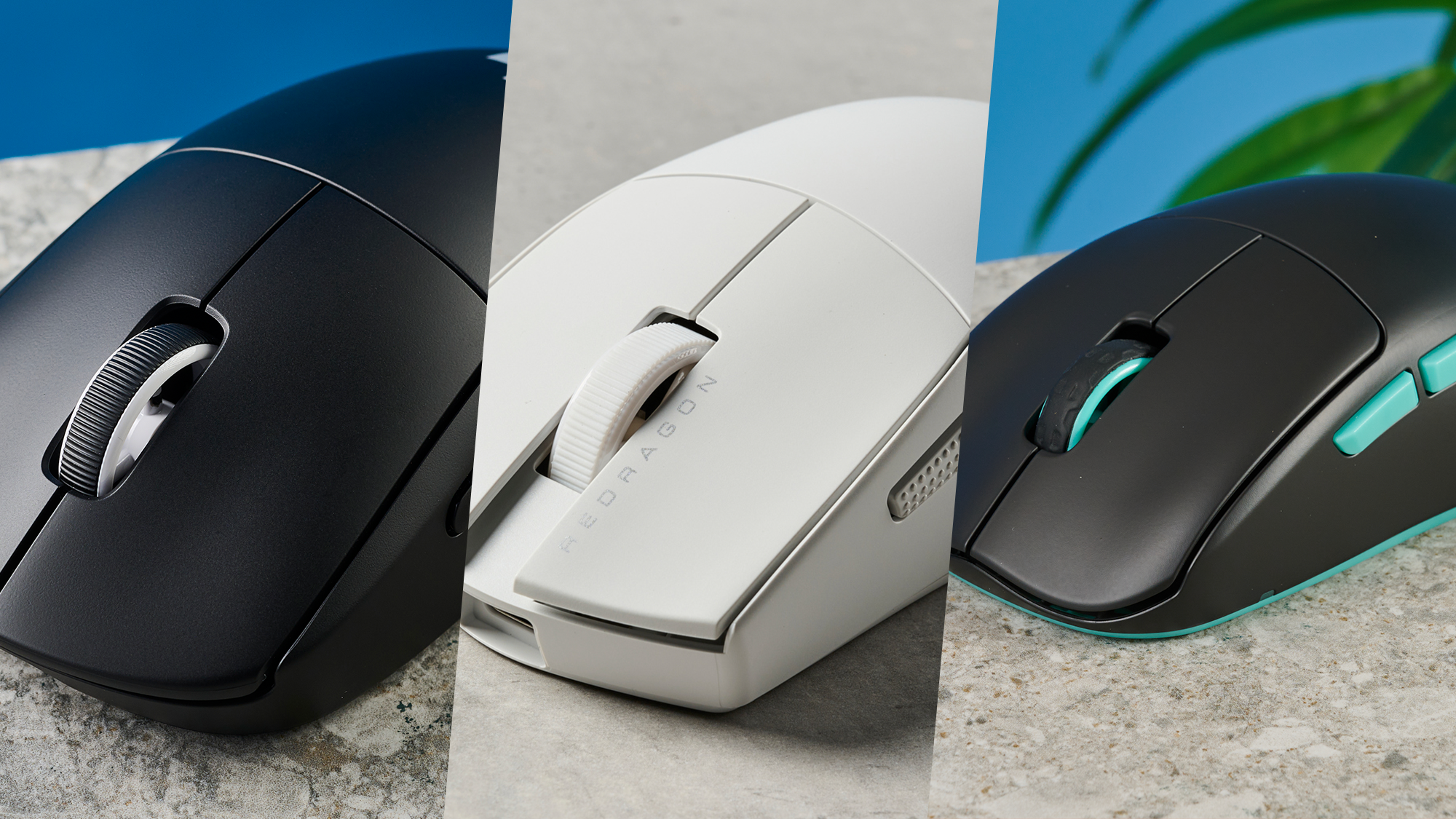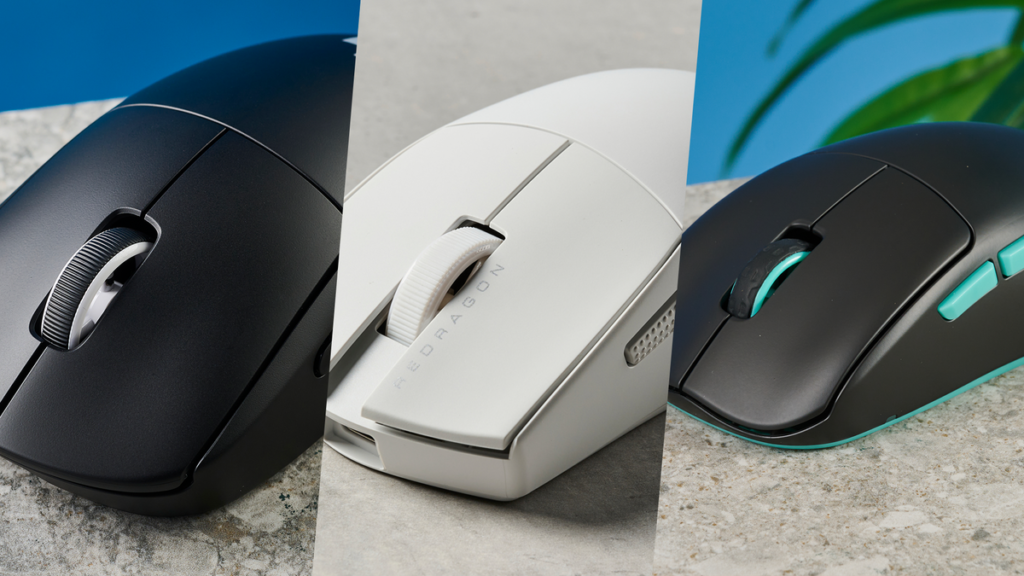
As a staff writer on the Reviews team at Tom’s Guide, and an avid gamer, I am spoilt for choice when it comes to testing and reviewing the best gaming mice around.
Whether it’s one of the most popular esports mice in the world, an out-there honeycomb design or a hidden gem of a budget mouse, there is a lot to consider when it comes to finding the right mouse for you.
Out of all of the mice I have tested, which ones would I have bought myself, and what are the ones I keep coming back to? I asked myself this question and 5 mice instantly sprang to mind, each with their own strengths.
I have spent a lot of time with these, both testing them for review and for my own personal enjoyment, and would wholeheartedly recommend them to anyone struggling to choose their next gaming mouse.
Things to Consider
Before I get to the mice that I would buy, I have some criteria when it comes to testing and using mice. These are the main things I look for and value in a good gaming mouse:
- Shape: This is an important factor for your grip, as well as the general comfort of the mouse. Also, you will likely have a preference when it comes to grip (Palm, Claw, Fingertip.) You need to value comfort, whether you are in for a marathon or a sprint.
- Size: Similarly to shape, mice are usually designed with different hand sizes in mind. I have medium sized hands, but sometimes I will come across a mouse that is too small — this can lead to an awkward grip and hand cramps.
- Durability: Even if you’re a particularly emotive gamer, mice aren’t really going to be thrown around or battered too much. Nevertheless, choosing a mouse with a good build and high quality materials will help prevent long term wear and tear, as well as helping to feel better in your hand from session to session.
- Weight: Mice aimed at professional players are typically low weight to allow for fast movement. Anything below 4 ounces is going to be ideal for most games, although more competitively-minded gamers will want to opt for a mouse around 2 ounces.
- Sensor: The most complex part of a mouse is also the easiest factor when it comes to actually buying one — the sensor does not matter nearly as much as manufacturers want you to think. As long as it supports a polling rate of at least 1,000Hz, and the DPI that you want to play on (most people choose between 500-1200), you should be good to go.
The mice I would buy right now
Logitech G Pro X Superlight 2 — the most competitive
The Logitech G Pro X Superlight 2 ($159) is our overall best gaming mouse for good reason. It’s the ultimate esports mouse, used by the majority of Counter Strike 2 professionals. Give this mouse a spin in any of the biggest competitive games, and you’ll start to understand why.
The simple but sleek design is lightweight and comfortable. Combined with the amazingly smooth mouse skates, the Superlight 2 will drift around your mousepad effortlessly, helping you rack up frags. The mouse supports a polling rate of up to 4,000Hz, ideal for high-level play where every little movement matters — although you can just as well play on 1,000Hz for an improved battery life.
With that being said, the quality of life features like the onboard dongle storage and long lasting battery mean this mouse isn’t totally stripped back from conveniences in the name of raw performance — a reason why I can recommend this to anyone who is looking to up their game.
Cherry M68 — the king of the mid-range
Not everyone has the money, or requirement, for the biggest and most professional gaming mouse out there. The Cherry M68 provides a powerful argument in humility — there’s nothing particularly flashy about its design or features. And yet, it absolutely nails the basics unlike anything else I have used.
The comfortable shape and fantastic build quality means I had zero qualms with it staying in my palm for the lengthiest gaming sessions. The mouse buttons really sealed the deal with just how clicky and responsive they were, with some of the best thumb buttons available on a mouse that really outdid the Logitech G Pro Superlight 2 — as well as being a lesser weight (what’s lighter than Superlight?!)
You might be tempted by the M68 Pro, the 8,000Hz polling rate variant that retails for an additional $30. While I had some appreciation for the 4,000Hz polling rate available on this mouse, 8k is overkill for even the most hardcore professional players. Stick to the 1,000Hz M68, and you’ll have one of the best mice for under $100.
Razer Deathadder V2 — wired perfection
I’m indulging myself a little with this pick.
Most people have moved on from wired mice, opting for the freedom of wireless options. Part of me still longs for a world where I don’t have to care about my battery, or potential latency between the mouse and my computer — just a back-to-basics mouse that I can rely on.
The Razer Deathadder V2 is exactly that, with a wide case and subtle ergonomic design that really supports your hand. It’s not the lightest mouse in the world— in fact, technically speaking, it has been surpassed by any other mouse on this list in terms of performance too. But, in terms of comfort and reliability, it has undeniably blown the competition away.
I still find myself using my original Deathadder V2, even when faced with some of the newest and innovative gaming mice. It’s the hallmark that I compare a gaming mouse to, and it remains one of my all time favorites. They’re selling so cheap that you would be a fool to note give it a try, if you can find one. Otherwise, the newer versions that keep the same case design are great alternatives too.
Redragon M916 Pro — an affordable powerhouse
Redragon are an underdog (underdragon?) to the rest of the big names on this list, but delivered a high-performing hit with the M916 Pro ($44).
For less than $50, this is a wireless mouse that has a case design and feeling in my hand scarily close to the Superlight 2 — and has the sensor performance to match with support for a 4,000Hz polling rate. A beefy companion app contains features like angle snapping and ripple control, which can give you an edge in competitive shooters.
If you can sacrifice a little bit of quality in the build, with some fairly cheap plastic used in the case, this is a surprisingly competent and reliable mouse that I still find myself coming back to. For less than $50, the aspiring competitive player might find something to really love about the M916 Pro.
SteelSeries Aerox 5 — the jack of all trades
The SteelSeries Aerox 5 ($139) converted me to being a fan of the divisive honeycomb design. I know that the Aerox 5 won’t be for everyone. Not least because this is very much a wildcard of a mouse, and one that doesn’t particularly excel at just one thing. It’s a little clunky in fast-paced FPS games compared to lighter mice, and people with smaller hands will struggle with the design.
However, the variety of features combine to provide a mouse that I described in my review as ideal for multi-genre gamers. I felt like I could throw the Aerox 5 at anything, and in return I had a remarkably comfortable experience. The proportions of the mouse, along with the wonderfully tactile plastic, makes this a delight to hold in my palm. The buttons were exceptionally clicky, so whether I was playing the latest military sim like Squad or building my economy in Victoria 3, this mouse was rewarding and comfortable.
It’s by no means my favorite mouse, but if you’re not scared of the looks, give it a shot!


